Frankfurt
Frankfurt am Main ( ![]() ) is the most populous city in Hesse with 764,104 inhabitants (December 31, 2020) and ranks fifth in Germany. It is district-free and forms the center of the Frankfurt metropolitan area with more than 2.3 million inhabitants. Around 5.8 million people live in the Frankfurt/Rhine-Main metropolitan region.
) is the most populous city in Hesse with 764,104 inhabitants (December 31, 2020) and ranks fifth in Germany. It is district-free and forms the center of the Frankfurt metropolitan area with more than 2.3 million inhabitants. Around 5.8 million people live in the Frankfurt/Rhine-Main metropolitan region.
Since the Middle Ages, Frankfurt am Main has been one of the most important urban centers in Germany. First mentioned in a document in 794, it was an imperial city from 1372. Until the end of the Holy Roman Empire in 1806, most of the Roman-German kings were elected in Frankfurt am Main and, since 1562, also crowned emperor. From 1815 on, the Free City of Frankfurt was a sovereign member state of the German Confederation. Here met the Federal Assembly and 1848/49 in the Paulskirche with the National Assembly the first German parliament. After the German War of 1866, Prussia annexed the Free City of Frankfurt. Rapid industrialization led to a population boom. Since 1875 the city counted more than 100,000 inhabitants, since 1928 more than 500,000. As a sign of its commitment to European unification, Frankfurt has called itself European City since 1998.
Today, Frankfurt am Main is one of the most important international financial centers, a major industrial, service and trade fair center and ranks among the world's cities. Frankfurt am Main is home to the European Central Bank, the Deutsche Bundesbank, the Frankfurt Stock Exchange, numerous financial institutions (including Deutsche Bank, Commerzbank, DZ Bank, KfW), the regulatory authorities BaFin and EIOPA, and Messe Frankfurt. The Frankfurt Book Fair and Music Fair are considered the world's leading trade fairs in their fields, and the International Motor Show was held here until 2019. The city is also home to many national sports associations, including the German Olympic Sports Confederation and the German Football Association.
Thanks to its central location, Frankfurt am Main is a European transportation hub. The airport is the third busiest in the EU, the main train station is a central rail hub, and the Frankfurter Kreuz interchange is the busiest road junction in Germany. In addition, DE-CIX in Frankfurt is one of the world's largest Internet nodes in terms of throughput.
A special feature for a European city is Frankfurt's ever-growing skyscraper skyline. Some striking skyscrapers are among the tallest in Europe. For this reason, Frankfurt am Main is sometimes ironically referred to as Mainhattan. Historical landmarks of the city are the Old Opera House and the partly reconstructed ensemble of the Old Town with Römerberg including the Römer City Hall, the Dom-Römer area and the Imperial Cathedral. More than 40 percent of the city area are parks and protected landscape areas, including the Frankfurt Green Belt with the Frankfurt City Forest, which has been owned by the city since 1372.
The city's cultural life has traditionally been shaped by civic foundations, patronage and liberal private initiatives. This has given rise to the Städtische Bühnen with the two divisions Oper Frankfurt and Schauspiel Frankfurt, the Frankfurt Museumsufer, the Senckenberg Naturmuseum, the Schirn Kunsthalle and the Museum für Moderne Kunst, the Historisches Museum and Goethe's birthplace in the old town, the Alte Oper, the English Theatre, the zoo and the Palmengarten. Founded in 1914 by a civic foundation as the Royal University, Goethe University is the sixth largest German university by number of students (WS 2019/20). It has produced several Leibniz and Nobel Prize winners. In addition, there are seven other universities in the city with a combined student population of over 60,000.
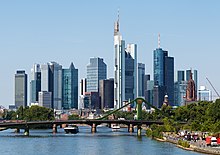
Frankfurt skyline seen from Deutschherrnbrücke (2015)
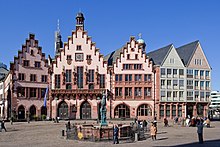
The Römer is Frankfurt's city hall and a landmark of the city.
Official logo of the city of Frankfurt am Main
Name
Franconofurd or Francorum vadus is the name of the settlement on the Domhügel in the first documented mentions in 794 in Old Frankish and Latin. Both mean ford of the Franks and refer to a rock barrier in the subsoil of the Main, which made it possible to cross the river - which was much wider then than today - without danger at normal water levels at this point, which was probably located somewhat above today's Old Bridge. The ford probably had no strategic importance in Roman times, since the Roman roads leading from Mogontiacum to the Limes and into the interior of Germania, such as the Elisabethenstraße, bypassed the Domhügel and the marshy Main lowlands.
After the departure of the Romans around the year 260, the Domhügel had been taken over by the Alamanni. Around 530, the Franks replaced the Alamanni in the rule over the Lower Main area. Probably the new rulers now used the ford as an important traffic route, which their trading partners therefore gave the name Frankenfurt.
In 1014-1017, the chronicler Thietmar von Merseburg wrote down a legend of Charlemagne's founding of the city that is still known today. He connects it with the Saxon wars:
"The origin of this place name shall no longer remain obscure to you, dear reader. Therefore, I will now tell you what I have heard about it from credible men. During the reign of Emperor Charlemagne, the son of King Pippin, war broke out between his people and our ancestors (the Saxons). In this battle the Franks were defeated by our people. When they had to go back across the Main, not knowing a ford, a hind crossed in front of them and showed them the way by God's mercy. They followed her and reached the saving bank with joy. After that the place is called Frankfurt. When the emperor saw himself already overcome by the enemies on this march, he was the first to retreat and declared: 'I would rather people revile me and say that I fled from here than that I fell here. For as long as I live, I may hope to avenge the grievous dishonor done to me.'"
- Thietmar of Merseburg: Chronicon VII, 75
In fact, Charlemagne never waged war against the Saxons in the area around the river Maine. The story of the origin of the name of Sachsenhausen, as the supposed place of settlement of captured Saxons by the victorious emperor, is also a legend. It probably goes back to a legendary mixture with the historical fact that shortly after his departure in 794 he went into the field against rebellious Saxons in northern Germany.
Another founding myth of Frankfurt was popular until the 18th century, for example still in Zedler's Universal-Lexicon. Today it is only little known: Helenos, a son of Priam, is said to have settled on the Main after his escape from destroyed Troy and founded a city called Helenopolis. Frankfurt would thus have the same mythical origin as Rome, whose legendary founders, Romulus and Remus, were descendants of escaped Trojans. Finally, around the year 130 A.D., a certain Francus, a duke of the Hogians, is said to have restored the ancient city of Helenopolis and called it Franckenfurt after his name. Other authors traced the name Helenopolis back to Empress Helena, the mother of Constantine the Great. The oldest known mention of the Helenopolis myth is handed down by the humanist Johannes Trithemius from the 15th century, other humanists followed much later. Helenopolis was frequently used as a synonym for Frankfurt until the 18th century, for example as a place of printing in books, in numismatics, and as a student's matriculation record.
The original name Franconofurd developed in the Middle Ages to Frankenfort or Frankinfort, in modern times to Franckfort and Franckfurth. Since the beginning of the 19th century at the latest, the spelling Frankfurt has been consolidated. The name addition am Main is already found in the oldest documents, since the 14th century regularly. Colloquially, the official name is usually shortened to Frankfurt, as long as there is no danger of confusion, especially with Frankfurt (Oder). Unofficial name forms such as Frankfurt/Main or Frankfurt a. M. are also frequently found, and Frankfurt (Main) is common in railroad traffic. The abbreviations Ffm or FFM are widely used, as well as the IATA airport code FRA or the vehicle registration number F.
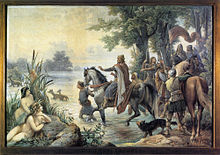
The discovery of the Frankenfurt by Charlemagne , watercolor by Leopold Bode (1888; Historisches Museum Frankfurt)
Geographical position
The city is centrally located in Germany's most important economic region on both sides of the Lower Main southeast of the Taunus Mountains in southwest Germany. About one-third of the city's area is designated as the Frankfurt Green Belt landscape conservation area. This includes the Frankfurt city forest, one of the largest urban forests in Germany. The city area stretches 23.4 kilometers in an east-west direction and 23.3 kilometers in a north-south direction.
The city has its highest natural point at the Berger Warte on the Berger Rücken in the Seckbach district at 212.6 meters above sea level. Its lowest point is on the banks of the Main River in Sindlingen at 88 meters above sea level. The city lies on the northernmost edge of the Upper Rhine Plain, which stretches from Basel to the Rhine-Main region.
The area focus as well as the geographic center of today's city area are located in the district of Bockenheim near the Westbahnhof, i.e. outside the historic city center. This can be traced back to the incorporations in the direction of the west; accordingly, the unincorporated Offenbach is closer to the city center than many districts of Frankfurt.
Neighboring municipalities and districts
Frankfurt borders the Main-Taunus district (city of Hattersheim am Main, municipality of Kriftel, cities of Hofheim am Taunus and Kelkheim (Taunus), municipalities of Liederbach am Taunus and Sulzbach (Taunus), cities of Schwalbach am Taunus and Eschborn) to the west, the Hochtaunus district (cities of Steinbach (Taunus), Oberursel (Taunus) and Bad Homburg vor der Höhe) to the northwest, to the north by the Wetteraukreis (cities of Karben and Bad Vilbel), to the northeast by the Main-Kinzig-Kreis (municipality of Niederdorfelden and city of Maintal), to the southeast by the city of Offenbach am Main, to the south by the district of Offenbach (city of Neu-Isenburg) and to the southwest by the district of Groß-Gerau (cities of Mörfelden-Walldorf, Rüsselsheim am Main, Raunheim and Kelsterbach).
Geology
Most of Frankfurt's urban area belongs to the western Lower Main Plain, in the east to the Hanau-Seligenstädter Senke, and in the far north already to the Wetterau. Geologically, the four river terraces of the Main and Nidda, formed since the younger Pliocene and in the Pleistocene, are recognizable in the city area. The highest terrace is composed of Taunus rocks and is found in the city area only in the area of the Berger Ridge. On the upper terrace of 170 to 120 meters lie the northern and northeastern parts of the city, which slopes steeply to the northwest to the Nidda and to the south at the Bornheimer Hang and Röderberg, as well as the south of Sachsenhausen with the Mühlberg and Sachsenhäuser Berg. The middle terrace lies at an altitude of between 100 and 115 meters. It can be seen in the urban area, for example, in the Kelsterbacher Terrasse and in the steep bank of the old town of Höchst. The lowest terrace between 95 and 90 meters was formed in the Holocene. It accompanies the Main River on both sides. The Domhügel (Cathedral Hill), the historical nucleus of the city, and the Karmeliterhügel (Carmelite Hill) are located on it. In some places in the city area, for example in Bockenheim (Basaltstraße) and in the city forest on Schwarzsteinkautweg, layers of Vogelsberg basalt from the Miocene can be found in the subsoil, reaching a thickness of up to 14 meters.
Climate
The oldest temperature measurements date back to December 1695 and are recorded in the chronicle of Achilles Augustus von Lersner. Continuous measurement series have existed since 1826, albeit for different stations. Today, there are several stations of the German Weather Service in Frankfurt, including the one at the airport, whose measurement series date back to 1949.
Frankfurt and the Rhine-Main region are located at the northern end of the Upper Rhine Plain, which is climatically one of the warmest regions in Germany. The annual average temperature of 10.6 °C (long-term average for the weather station at the airport in the reference period 1981-2010) is above that of other German metropolises (Cologne 10.3 °C, Berlin 9.5 °C, Hamburg 9.4 °C, Munich 8.6 °C). Together with cities such as Mannheim, Freiburg, Karlsruhe and Heidelberg, Frankfurt is among the warmest in Germany. The inner city of Frankfurt could be the warmest place in Germany, due to the dense development and the resulting heat island. Due to the microclimate, the city center has average temperatures that are about 0.6 °C higher than the airport.
In the Westend, a centrally located and densely built-up part of Frankfurt, the annual mean temperature in the last five years (June 2016-May 2021) was even 12.1 °C, which is partly due to the general trend toward higher temperatures. Thus, Frankfurt's West End was similarly warm between 2016 and 2021 as the warmest place in Switzerland, Locarno, south of the Alps in Ticino, where an annual mean temperature of 12.4 °C was measured between 1981 and 2010.
Based on the reference period 1981 to 2010 (data on average maximum and minimum temperatures in the West End between June 2016 and June 2021 are also included in the text), average nighttime temperatures in winter are around the freezing point between -1 °C and 3 °C with colder days reaching less than -5 °C. There are on average about 69 frost days and 13 ice days per year, with a strong downward trend. The maximum temperatures range between 4 °C and 8 °C, on the warmer days even more than 10 °C are possible. In the cold season there are on average 1-3 hours of sunshine per day. Snow is rare, more snow is found in the heights of the Taunus northwest of Frankfurt. Winters are cool to mild compared to the rest of Germany and also quite dark.
Spring tends to reach the Upper Rhine Graben in Germany first. Starting at Freiburg in the far southwest, the beginning of vegetation moves bit by bit to the northeast via Offenburg, Karlsruhe, Mannheim and Worms until it reaches Frankfurt in a few days. Accordingly, Frankfurt has a comparatively long growing season. The apple blossom begins here on average at the beginning to the middle of April.
In summer, average night temperatures range between 12 °C and 16 °C. Sultry tropical nights with more than 20 °C are possible, especially in the city center. The number of these days varies annually, averaging 5, with a maximum of 10-15 days. Maximum temperatures settle in a range between 24 °C and 28 °C. On average, there are more than 13 days when the maximum temperature exceeds 30 °C, and more than 52 days when it exceeds 25 °C. With 7-8 hours of sunshine per day, summer is the sunniest season. Stronger thunderstorms are occasionally possible, but overall it is quite dry.
Considered over the entire year, Frankfurt am Main has a mild climate for Germany with cool to mild winters with little snow, with mild transitional periods and a warm to hot summer with lots of sunshine and little rain or precipitation. In the year just under 600 mm of precipitation falls and the sun shines depending on the year between 1600 and 1900h per year which makes Frankfurt one of the drier and slightly sunnier than average cities in the country. The city owes this climate on the one hand to its sheltered location in the lee of the Taunus Mountains and on the other hand to its sheltered location in the Upper Rhine Graben in southwestern Germany. However, drought can cause problems in the region in some years.
The extreme values are -24.2 °C in January 1850 and -23.8 °C in January 1940, respectively, and +39.6 °C in August 2015 and +40.2 °C in July 2019.
The prevailing wind directions are west and southwest.
Based on the data of the reference period 1981-2010, the cool temperate, humid transition climate of Frankfurt is, according to Köppen-Geiger, a climate of the classification Cfb, typical for Central and Western Europe. Related to the more recent data between 2016 and 2021, the climate is also Cfb , but meanwhile, since the mean temperature in July is 21.6 °C, not far from the limit of 22 °C, it is almost in the range of the subtropical east side climate Cfa. This is a climate zone that can actually be found in northern Italy. If the warming will continue, the Upper Rhine Plain, thus also Frankfurt, could actually get such a classification soon, thus a climate as it is classically found in Northern Italy.
| Frankfurt am Main (1981-2010) | ||||||||||||||||||||||||||||||||||||||||||||||||
| Climate diagram | ||||||||||||||||||||||||||||||||||||||||||||||||
| ||||||||||||||||||||||||||||||||||||||||||||||||
| Climate data for Frankfurt Airport for the reference period 1981 to 2010
Source: German Weather Service,; wetterkontor.de Period from 1981 to 2010 | |||||||||||||||||||||||||||||||||||||||||||||||||||||||||||||||||||||||||||||||||||||||||||||||||||||||||||||||||||||||||||||||||||||||||||||||||||||||||||||||||||||||||||||||||||||||||||||||||||||||||||||||||||||||||||||||||||||||||||||||||||||||||||||||||||||||||||
The climate data for Frankfurt am Main-Westend in the 5 years between 2016 and 2021 are less representative than the data from the airport for the official reference period 1981-2010, since data from many fewer years are available, but since they are relatively recent, they do tell us something about the trend towards higher temperatures, which gained momentum especially in the 2000s.
| Frankfurt am Main (2016-2021) | ||||||||||||||||||||||||||||||||||||||||||||||||
| Climate diagram | ||||||||||||||||||||||||||||||||||||||||||||||||
| ||||||||||||||||||||||||||||||||||||||||||||||||
| Climate data for Frankfurt am Main-Westend 06/2016 to 05/2021
Source: wetterdienst.de, | |||||||||||||||||||||||||||||||||||||||||||||||||||||||||||||||||||||||||||||||||||||||||||||||||||||||||||||||||||||||||||||||||||||||||||||||||||||||||||||||||||||||||||||||||||||||||||||||||||||||||||||||
| Temperature records at the station Frankfurt am Main-Westend 11/1985 to 05/2021
Source: Michael Theusner's weather page, |
Bioclimate and air quality
The clean air plan for Frankfurt drawn up by the state of Hesse dates from 2005 and was updated for the first time in 2011. According to the bioclimate map of the German Meteorological Service, Frankfurt is located in a polluted conurbation. From an air-hygienic point of view, the often low wind speeds and, in connection with this, the frequency of periods with unfavorable air exchange are particularly characteristic. An essential part of the clean air plan was the establishment of an environmental zone covering large parts of the city area on January 1, 2012. By 2018, the clean air plan was unable to reduce the pollution caused by nitrogen oxides, especially nitrogen dioxide, below the limit values of the 39th BImSchV, which have been in force since 2010. "The main emitter in Frankfurt am Main is motor vehicle traffic, followed by shares from air traffic, industry as well as building heating. The prevailing limit value exceedances are mainly caused by motor vehicle traffic. On busy roads, diesel-powered passenger cars are the main polluters, accounting for up to 80%." The limit value for nitrogen dioxide can therefore often not be complied with in the Frankfurt urban area at busy locations. The Wiesbaden Administrative Court had therefore ruled on September 5, 2018, that "the clean air plan for Frankfurt submitted by the state of Hesse must include a driving ban for Euro 4 and older diesel vehicles and Euro 1 and 2 gasoline vehicles from February 2019. For Euro 5 diesels, a driving ban should apply from September 2019." The diesel driving ban would affect about 200,000 vehicles in the Frankfurt metropolitan area. The city and state were able to obtain an appeal against the driving ban ruling at the Hessian Administrative Court in Kassel and avert a diesel driving ban for the time being. The second update of the clean air plan, which came into force on December 28, 2020, is associated with a comprehensive package of measures, including improved parking management, replacement of municipal vehicles, installation of bus and bicycle lanes, and a speed limit of 40 km/h within the plant ring. If the measures do not bring about compliance with the limit values, traffic restrictions for older diesel and gasoline vehicles will be ordered in particularly polluted areas, effective July 1, 2021.
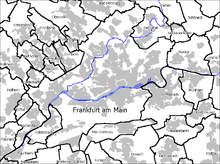
Frankfurt and neighboring communities
City breakdown
Municipalities, city districts and local districts
The city is statistically and administratively divided into 46 districts, which are, however, numbered up to 47 (the number 23 is omitted, but for technical reasons also assigned to the district Praunheim). These, in turn, are made up of 124 city districts, 448 electoral districts and 6,130 blocks.
Politically, the city is divided into 16 local districts, each of which has a local council with a local chief as chairman. The villages that were incorporated in the 1970s still form their own local districts.
The largest district by area and population is Sachsenhausen, followed by Nordend and Bockenheim. The few inhabitants of the Frankfurt Airport district are included in the Sachsenhausen South district in the statistical yearbook. The smallest district by area is Altstadt.
| Population in the 46 city districts on December 31, 2020 | |||||||||
| No. | District | Surface area | Inhabitants | Female | Male | German | Foreigners | Foreigner | Inhabitants per |
| 1 | Old Town | 000000000000000.50600000000,506 | 000000000004255.00000000004.255 | 000000000002097.00000000002.097 | 000000000002158.00000000002.158 | 000000000002704.00000000002.704 | 000000000001551.00000000001.551 | 36,5 | 8409 |
| 2 | Downtown | 000000000000001.49100000001,491 | 000000000006550.00000000006.550 | 000000000003109.00000000003.109 | 000000000003441.00000000003.441 | 000000000003567.00000000003.567 | 000000000002983.00000000002.983 | 45,5 | 4393 |
| 3 | Station Quarter | 000000000000000.54200000000,542 | 000000000003703.00000000003.703 | 000000000001409.00000000001.409 | 000000000002294.00000000002.294 | 000000000001852.00000000001.852 | 000000000001851.00000000001.851 | 50 | 6832 |
| 4 | West End South | 000000000000002.49700000002,497 | 000000000019318.000000000019.318 | 000000000009863.00000000009.863 | 000000000009455.00000000009.455 | 000000000014046.000000000014.046 | 000000000005272.00000000005.272 | 27,3 | 7736 |
| 5 | West End North | 000000000000001.63200000001,632 | 000000000010330.000000000010.330 | 000000000005362.00000000005.362 | 000000000004968.00000000004.968 | 000000000007356.00000000007.356 | 000000000002974.00000000002.974 | 28,8 | 6330 |
| 6 | North End West | 000000000000003.10000000003,100 | 000000000030975.000000000030.975 | 000000000015882.000000000015.882 | 000000000015093.000000000015.093 | 000000000024361.000000000024.361 | 000000000006614.00000000006.614 | 21,4 | 9992 |
| 7 | Nordend East | 000000000000001.53200000001,532 | 000000000023135.000000000023.135 | 000000000011998.000000000011.998 | 000000000011137.000000000011.137 | 000000000017985.000000000017.985 | 000000000005150.00000000005.150 | 22,3 | 15101 |
| 8 | East End | 000000000000005.56400000005,564 | 000000000029744.000000000029.744 | 000000000015208.000000000015.208 | 000000000014536.000000000014.536 | 000000000021268.000000000021.268 | 000000000008476.00000000008.476 | 28,5 | 5346 |
| 9 | Bornheim | 000000000000002.78600000002,786 | 000000000030761.000000000030.761 | 000000000016260.000000000016.260 | 000000000014501.000000000014.501 | 000000000023447.000000000023.447 | 000000000007314.00000000007.314 | 23,8 | 11041 |
| 10 | Gutleutviertel | 000000000000001.79200000001,792 | 000000000006786.00000000006.786 | 000000000002950.00000000002.950 | 000000000003836.00000000003.836 | 000000000003910.00000000003.910 | 000000000002876.00000000002.876 | 42,4 | 3787 |
| 11 | Gallus | 000000000000004.51700000004,517 | 000000000042012.000000000042.012 | 000000000019887.000000000019.887 | 000000000022125.000000000022.125 | 000000000024940.000000000024.940 | 000000000017072.000000000017.072 | 40,6 | 9301 |
| 12 | Bockenheim | 000000000000008.03100000008,031 | 000000000042140.000000000042.140 | 000000000021117.000000000021.117 | 000000000021023.000000000021.023 | 000000000028170.000000000028.170 | 000000000013970.000000000013.970 | 33,2 | 5247 |
| 13 | Sachsenhausen North | 000000000000004.23500000004,235 | 000000000032824.000000000032.824 | 000000000016815.000000000016.815 | 000000000016009.000000000016.009 | 000000000024766.000000000024.766 | 000000000008058.00000000008.058 | 24,5 | 7751 |
| 14 | Sachsenhausen South | 000000000000030.535000000030,535 | 000000000029163.000000000029.163 | 000000000015037.000000000015.037 | 000000000014126.000000000014.126 | 000000000022085.000000000022.085 | 000000000007078.00000000007.078 | 24,3 | 955 |
| 15 | Airport | 000000000000024.176000000024,176 | Data included in Sachsenhausen South | ||||||
| 16 | Oberrad | 000000000000002.70800000002,708 | 000000000013648.000000000013.648 | 000000000006746.00000000006.746 | 000000000006902.00000000006.902 | 000000000009044.00000000009.044 | 000000000004604.00000000004.604 | 33,7 | 5040 |
| 17 | Niederrad | 000000000000006.12400000006,124 | 000000000027043.000000000027.043 | 000000000013563.000000000013.563 | 000000000013480.000000000013.480 | 000000000017242.000000000017.242 | 000000000009801.00000000009.801 | 36,2 | 4416 |
| 18 | Schwanheim | 000000000000014.773000000014,773 | 000000000020576.000000000020.576 | 000000000010557.000000000010.557 | 000000000010019.000000000010.019 | 000000000015511.000000000015.511 | 000000000005065.00000000005.065 | 24,6 | 1393 |
| 19 | Griesheim | 000000000000005.10000000005,100 | 000000000023569.000000000023.569 | 000000000011089.000000000011.089 | 000000000012480.000000000012.480 | 000000000013601.000000000013.601 | 000000000009968.00000000009.968 | 42,3 | 4621 |
| 20 | Rödelheim | 000000000000004.66000000004,660 | 000000000019253.000000000019.253 | 000000000009629.00000000009.629 | 000000000009624.00000000009.624 | 000000000012759.000000000012.759 | 000000000006494.00000000006.494 | 33,7 | 4132 |
| 21 | Hausen | 000000000000001.24600000001,246 | 000000000007349.00000000007.349 | 000000000003798.00000000003.798 | 000000000003551.00000000003.551 | 000000000004808.00000000004.808 | 000000000002541.00000000002.541 | 34,6 | 5898 |
| 22 | Praunheim | 000000000000005.15300000005,153 | 000000000016729.000000000016.729 | 000000000008575.00000000008.575 | 000000000008154.00000000008.154 | 000000000012027.000000000012.027 | 000000000004702.00000000004.702 | 28,1 | 3246 |
| 24 | Heddernheim | 000000000000002.51400000002,514 | 000000000017073.000000000017.073 | 000000000008937.00000000008.937 | 000000000008136.00000000008.136 | 000000000012795.000000000012.795 | 000000000004278.00000000004.278 | 25,1 | 6791 |
| 25 | Niederursel | 000000000000007.42200000007,422 | 000000000016611.000000000016.611 | 000000000008596.00000000008.596 | 000000000008015.00000000008.015 | 000000000011653.000000000011.653 | 000000000004958.00000000004.958 | 29,8 | 2238 |
| 26 | Ginnheim | 000000000000002.69500000002,695 | 000000000016826.000000000016.826 | 000000000008787.00000000008.787 | 000000000008039.00000000008.039 | 000000000012442.000000000012.442 | 000000000004384.00000000004.384 | 26,1 | 6243 |
| 27 | Thornbush | 000000000000002.38400000002,384 | 000000000018715.000000000018.715 | 000000000009925.00000000009.925 | 000000000008790.00000000008.790 | 000000000014551.000000000014.551 | 000000000004164.00000000004.164 | 22,2 | 7850 |
| 28 | Eschersheim | 000000000000003.23200000003,232 | 000000000015323.000000000015.323 | 000000000007915.00000000007.915 | 000000000007408.00000000007.408 | 000000000011978.000000000011.978 | 000000000003345.00000000003.345 | 21,8 | 4741 |
| 29 | Eckenheim | 000000000000002.25400000002,254 | 000000000014405.000000000014.405 | 000000000007448.00000000007.448 | 000000000006957.00000000006.957 | 000000000010101.000000000010.101 | 000000000004304.00000000004.304 | 29,9 | 6391 |
| 30 | Preungesheim | 000000000000003.68000000003,680 | 000000000015775.000000000015.775 | 000000000008005.00000000008.005 | 000000000007770.00000000007.770 | 000000000011294.000000000011.294 | 000000000004481.00000000004.481 | 28,4 | 4287 |
| 31 | Bonames | 000000000000001.37200000001,372 | 000000000006450.00000000006.450 | 000000000003275.00000000003.275 | 000000000003175.00000000003.175 | 000000000004597.00000000004.597 | 000000000001853.00000000001.853 | 28,7 | 4701 |
| 32 | Berkersheim | 000000000000003.18500000003,185 | 000000000003881.00000000003.881 | 000000000001935.00000000001.935 | 000000000001946.00000000001.946 | 000000000003058.00000000003.058 | 000000000000823.0000000000823 | 21,2 | 1219 |
| 33 | Riederwald | 000000000000001.07400000001,074 | 000000000005000.00000000005.000 | 000000000002544.00000000002.544 | 000000000002456.00000000002.456 | 000000000003549.00000000003.549 | 000000000001451.00000000001.451 | 29 | 4655 |
| 34 | Seckbach | 000000000000007.99900000007,999 | 000000000010473.000000000010.473 | 000000000005243.00000000005.243 | 000000000005230.00000000005.230 | 000000000007411.00000000007.411 | 000000000003062.00000000003.062 | 29,2 | 1309 |
| 35 | Fechenheim | 000000000000006.98400000006,984 | 000000000017843.000000000017.843 | 000000000008410.00000000008.410 | 000000000009433.00000000009.433 | 000000000009991.00000000009.991 | 000000000007852.00000000007.852 | 44 | 2555 |
| 36 | Highest | 000000000000004.59700000004,597 | 000000000016103.000000000016.103 | 000000000007812.00000000007.812 | 000000000008291.00000000008.291 | 000000000009416.00000000009.416 | 000000000006687.00000000006.687 | 41,5 | 3503 |
| 37 | Low | 000000000000003.70800000003,708 | 000000000019785.000000000019.785 | 000000000009721.00000000009.721 | 000000000010064.000000000010.064 | 000000000012299.000000000012.299 | 000000000007486.00000000007.486 | 37,8 | 5336 |
| 38 | Sindlingen | 000000000000003.96800000003,968 | 000000000009095.00000000009.095 | 000000000004466.00000000004.466 | 000000000004629.00000000004.629 | 000000000006047.00000000006.047 | 000000000003048.00000000003.048 | 33,5 | 2292 |
| 39 | Zeilsheim | 000000000000005.46700000005,467 | 000000000012515.000000000012.515 | 000000000006192.00000000006.192 | 000000000006323.00000000006.323 | 000000000008604.00000000008.604 | 000000000003911.00000000003.911 | 31,3 | 2289 |
| 40 | Unterliederbach | 000000000000006.02100000006,021 | 000000000017151.000000000017.151 | 000000000008525.00000000008.525 | 000000000008626.00000000008.626 | 000000000011522.000000000011.522 | 000000000005629.00000000005.629 | 32,8 | 2849 |
| 41 | Sossenheim | 000000000000005.91900000005,919 | 000000000016175.000000000016.175 | 000000000008111.00000000008.111 | 000000000008064.00000000008.064 | 000000000010170.000000000010.170 | 000000000006005.00000000006.005 | 37,1 | 2733 |
| 42 | Nieder-Erlenbach | 000000000000008.36700000008,367 | 000000000004686.00000000004.686 | 000000000002387.00000000002.387 | 000000000002299.00000000002.299 | 000000000004041.00000000004.041 | 000000000000645.0000000000645 | 13,8 | 560 |
| 43 | Kalbach-Riedberg | 000000000000006.58000000006,580 | 000000000022170.000000000022.170 | 000000000011210.000000000011.210 | 000000000010960.000000000010.960 | 000000000016930.000000000016.930 | 000000000005240.00000000005.240 | 23,6 | 3369 |
| 44 | Harheim | 000000000000004.83700000004,837 | 000000000005294.00000000005.294 | 000000000002663.00000000002.663 | 000000000002631.00000000002.631 | 000000000004439.00000000004.439 | 000000000000855.0000000000855 | 16,2 | 1094 |
| 45 | Nieder-Eschbach | 000000000000006.34800000006,348 | 000000000011462.000000000011.462 | 000000000005904.00000000005.904 | 000000000005558.00000000005.558 | 000000000008716.00000000008.716 | 000000000002746.00000000002.746 | 24 | 1806 |
| 46 | Bergen-Enkheim | 000000000000012.601000000012,601 | 000000000017988.000000000017.988 | 000000000009245.00000000009.245 | 000000000008743.00000000008.743 | 000000000014372.000000000014.372 | 000000000003616.00000000003.616 | 20,1 | 1428 |
| 47 | Frankfurt mountain | 000000000000002.40000000002,400 | 000000000008225.00000000008.225 | 000000000004147.00000000004.147 | 000000000004078.00000000004.078 | 000000000005976.00000000005.976 | 000000000002249.00000000002.249 | 27,3 | 3427 |
| City of Frankfurt on the Main | 248,31 | 000000000758847.0000000000758.847 | 000000000382354.0000000000382.354 | 000000000376493.0000000000376.493 | 000000000531361.0000000000531.361 | 000000000227486.0000000000227.486 | 30 | 3056 | |
Incorporations
Until 1866, the urban area of Frankfurt am Main consisted of the city district with the present-day districts of Altstadt, Innenstadt, Bahnhofsviertel, Gutleutviertel, Gallus, Westend, Nordend, Ostend, Riederwald and Sachsenhausen, including the Frankfurt city forest, as well as the rural district with the eight villages of Bornheim, Hausen, Niederursel (half with the Grand Duchy of Hesse), Bonames, Nieder-Erlenbach, Dortelweil, Oberrad and Niederrad. After the annexation of the Free City of Frankfurt by Prussia, its former territory formed the city district of Frankfurt am Main.
From 1877, the municipalities of the city district, and in 1910 also of the district of Frankfurt, which was formed in 1885, were gradually incorporated into the city of Frankfurt. The last incorporation took place in 1977. Of the former Frankfurt villages, only Dortelweil is not part of the city area again today.
In today's Frankfurt city area there are also some deserted settlements, i.e. former settlements or villages that were abandoned in the course of time.
See also
|
|
|
|
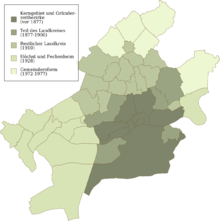
Incorporations of Frankfurt am Main
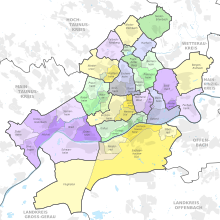
Frankfurt districts
History
→ Main article: History of Frankfurt am Main
From the Frankenfurt to the end of the Holy Roman Empire
Frankfurt am Main was first mentioned on February 22, 794 in a document of Charlemagne for the Regensburg monastery of St. Emmeram. The document, written in Latin, says: "... actum super fluvium Moin in loco nuncupante Franconofurd" - "given (issued) on the river Main in a place called Frankfurt." However, a settlement of the Domhügel is already proven for the Neolithic Age. A Roman military camp and, in Merovingian times, a Frankish royal court were probably subsequently established at the same site. In June 794, important church representatives of the empire gathered in the Frankish royal palace in the Synod of Frankfurt.
In 843, Frankfurt became the most important royal palatinate of the East Franks for a time and the site of imperial assemblies. In 1220, Emperor Frederick II abolished the office of the imperial bailiff in Frankfurt. This ministerial office was replaced by the imperial sheriff appointed by the emperor as head of the otherwise self-governing citizenry. In the course of the 13th and 14th centuries, the city gained more and more privileges and regalia, for example the annual autumn fair in 1240 and the spring fair in 1330. In 1266, the town council, consisting of 42 patricians and skilled craftsmen, was mentioned for the first time. Since 1311, the council annually elected two mayors as heads of the town. With the acquisition of the Schultheißenamt, Frankfurt achieved full sovereignty as an imperial city in 1372.
The Golden Bull of 1356 confirmed Frankfurt as the legitimate electoral city of the Roman kings, after most royal elections had already taken place here since 1147. From 1562, the imperial coronations also took place in Frankfurt, the last being that of the Habsburg Franz II in 1792. The coronation route, which led from the imperial cathedral of St. Bartholomew across the market to the Römer, was reconstructed between 2012 and 2018 as part of the Dom-Römer project. In 1742, Frankfurt even became a residential city for almost three years. Since Emperor Charles VII, who came from the House of Wittelsbach, was unable to return to his home country, the Habsburg-occupied Electorate of Bavaria, after his coronation, he was forced to live in the Palais Barckhaus on the Zeil until October 1744.
With the end of the Old Empire, Frankfurt's sovereignty as an imperial city also ended. On July 12, 1806, it fell under the rule of Prince-Primate Karl Theodor von Dalberg, who united it with the Principality of Regensburg and the Principality of Aschaffenburg as well as the Imperial City of Wetzlar to form an independent state within the Confederation of the Rhine, the State of the Prince-Primate. In 1810, Dalberg ceded the Principality of Regensburg to Bavaria, received the Principality of Hanau and the Principality of Fulda in exchange, and became Grand Duke of Frankfurt. In the short-lived Grand Duchy of Frankfurt, the city of Frankfurt formed a mairie from 1810 to 1813 and was the capital of the department of Frankfurt, to which its former imperial city villages also belonged as the Land-Districtsmairie Frankfurt.
The Free City of Frankfurt
→ Main article: Free city of Frankfurt
With the collapse of the Napoleonic system, Dalberg abdicated as Grand Duke of Frankfurt on October 28, 1813. His Grand Duchy was placed under the Central Administrative Department for the occupied territories by the victorious Allies as the General Government of Frankfurt. On December 14, 1813, the independence of the city and its territory was restored and its imperial city constitution was reinstated. The previous prefect Friedrich Maximilian von Günderrode took over the provisional management of the administration as city sheriff.
At the Congress of Vienna, the Kingdom of Bavaria planned to annex Frankfurt, but on June 8, 1815, the Congress decided to restore Frankfurt as a Free City within the German Confederation. It was thus one of four Free Cities, along with Hamburg, Bremen and Lübeck, that were able to maintain their traditional urban freedom into the modern era. The Free City of Frankfurt gave itself a new constitution, the Konstitutionsergänzungsakte, and the motto Stark im Recht. The Bundestag of the German Confederation established itself in Frankfurt. In 1833, the Frankfurt Wachensturm, an attempt to trigger a general revolution in Germany, failed. In 1848, the March Revolution took place in the German states. The convened National Assembly met in Frankfurt's Paulskirche and drew up Germany's first all-German and democratic constitution, the Paulskirchenverfassung.
In 1863, the Frankfurt Fürstentag, an attempt to reform the German Confederation, ended unsuccessfully. In the German War of 1866, Frankfurt remained loyal to the Confederation. Public opinion tended to be on the side of Austria and the Kaiser, although there had long been voices in Frankfurt advocating voluntary annexation to Prussia for economic and foreign policy reasons. On July 18, during the Main campaign, the city was occupied by the Prussian Main Army and subjected to heavy tributes. On October 2, Prussia annexed the city, which thus finally lost its independence; the urban district of Frankfurt was assigned to the Wiesbaden administrative district of the province of Hesse-Nassau, and payment of the tributes was later waived. In 1868, Prussia introduced the magistrate constitution in Frankfurt with a mayor as the city's head. As a reconciliatory symbol, the Franco-Prussian War officially ended in Frankfurt in 1871 with the Peace of Frankfurt.
From the founding period to the destruction in the Second World War
The annexation was advantageous for the city's economic development into an industrial center with rapid population growth. Between 1877 and 1910, Frankfurt incorporated numerous surrounding towns in several stages and increased its area from 70 to 135 square kilometers. Thus, it eventually even became Germany's largest city in terms of area for a short time at the beginning of the 20th century. With the rapid population growth, the city expanded its public infrastructure, including numerous schools, several Main bridges, water supply, sewage system, a modern professional fire department, cattle and slaughterhouse, the market hall, streetcars, train stations and ports. After industry had initially settled mainly in Bockenheim, along Mainzer Landstrasse and in Sachsenhausen, the Osthafen (East Harbor) was created between 1909 and 1912 with an industrial area whose newly developed area was as large as the entire built-up area of the city north of the Main at the end of the 19th century. In addition to the traditional Frankfurt industries, foundries and metal goods, type foundries and printing works, breweries, chemical factories and, after the International Electrotechnical Exhibition in 1891, an electrical industry were now established. In 1914, the university endowed by Frankfurt citizens was opened.
During World War I, Frankfurt was spared destruction, but due to its location as a Prussian border town with a Hessian and Bavarian hinterland, it suffered from a poor supply of food and other necessities. As a result of the November Revolution in 1918, there were riots and intermittent street fights that lasted until the end of 1919.
In the 1920s, Frankfurt experienced a cultural flowering, among other things through its theaters and the urban development program of the New Frankfurt (known worldwide for the Frankfurt Kitchen, the archetype of the modern fitted kitchen). In 1925, the first International Workers' Olympics were held in the newly built Waldstadion.
During the National Socialist era, 11,134 Jews were deported from Frankfurt. Only 367 of them survived the Holocaust. In World War II, Allied air raids on Frankfurt destroyed about 70 percent of the buildings, including almost the entire old and inner city. The medieval cityscape, which had remained almost closed until 1944, was lost as a result, since the reconstruction in the 1950s was not based on the old structures. Large parts of the former old town are still characterized today by the simple modernist functional buildings and traffic axes that were built at that time.
Since 1945: Development into a multicultural business metropolis
After the end of the war, U.S. forces established their European headquarters in Frankfurt. Plans to give the expanded city area special status as an independent District of Frankfurt, analogous to the District of Columbia, proved impractical. In 1946, the city was assigned to the newly formed state of Greater Hesse. In 1947, the Economic Council of the Bizone, which was expanded into the Trizone in 1948, took up residence in Frankfurt. In the election for the federal capital, Frankfurt lost to Konrad Adenauer's favorite Bonn on May 10, 1949. A parliament building had already been built in Frankfurt. It has housed the Hessian Broadcasting Corporation ever since.
Despite its defeat in the capital question, the city once again developed into an economic metropolis and the most important financial center in continental Europe during the period of the economic miracle. As a result of the division of Germany, Frankfurt assumed metropolitan functions as the seat of companies, associations and federal institutions, and in 1998 became the seat of the European Central Bank.
Population development
→ Main article: Population development of Frankfurt am Main
Information on the development of Frankfurt's population is based on imprecise estimates until the 19th century, and on census results and official statistics only from around 1810. In the Middle Ages, Frankfurt was one of the medium-sized German cities with a population of around 10,000. In the 17th century, the population exceeded 20,000, in the mid-18th century 30,000, and around 1810 40,000. By the end of the Free City of Frankfurt in 1866, the city's population had risen to over 90,000, of whom about 78,000 lived within the ramparts. Today, about 7,000 people still live here.
In 1875, Frankfurt had 100,000 inhabitants. From about 1880, it was one of the ten largest cities in Germany. In 1910, with 414,576 inhabitants, it ranked ninth in Germany and fourth among the major Prussian cities. By the beginning of World War II, the city population had risen to 553,464.
During World War II, more than 4800 civilians and 12,700 Frankfurt soldiers lost their lives, and almost 12,000 Jewish residents of Frankfurt (out of a former 30,000) were murdered in the Holocaust. At the end of 1945, 358,000 people still lived in the city, where about half of the housing had been destroyed by the war.
In 1951, the population again exceeded the level of 1939 and reached a temporary high of 691,257 in 1963. Due to migration losses to the surrounding areas, the number of inhabitants decreased to 592,411 by 1986, since when it has risen again to 764,104 (as of December 31, 2020). The population growth is a result of the city's economic dynamism, the designation of new settlement and residential areas, and the change in the age structure due to the influx of young families.
According to the Regionalized Population Projection to 2040 published in June 2015, the Citizens' Statistics and Elections Office expects the strong population growth of recent years to continue. On February 18, 2019, Frankfurt had more than 750,000 inhabitants for the first time. In 2020, about 764,000 residents are expected, in 2030 about 810,000 and in 2040 about 830,000. Due to the continuing influx of mainly young people, Frankfurt's average age is falling at the fastest rate in Germany, according to a study by the Institute of the German Economy (IW). In 2017, it stood at 40.6 years.
30 percent of the 758,847 residents registered as primary residents in Frankfurt on December 31, 2020, do not have German citizenship. Apart from some surrounding municipalities, this is the highest proportion of foreigners of all municipalities in Hesse. According to the Integrity and Diversity Monitoring Report of the municipal Office for Multicultural Affairs presented in June 2017, 51.2 percent of Frankfurt residents had an immigrant background in 2015, but about one-third of them were not immigrants themselves.
Religions and worldviews
→ Main article: Religions in Frankfurt am Main
See also: List of sacral buildings in Frankfurt am Main
In 2019, 19.6% of residents were Roman Catholic, 15.7% were Protestant, and 64.7% were non-denominational or belonged to other denominations or religions. In the previous year - 2018 - 20.3% of residents were Roman Catholic, 16.2% were Protestant; 63.5% were nondenominational or belonged to other denominations or religions.
Today, all world religions are represented in Frankfurt. Until 2001, the majority of Frankfurt residents belonged to one of the Christian denominations. Due to secularization and immigration of non-Christian population groups, the Christian share of the population is steadily decreasing. The proportion of non-denominational people is not shown separately in the city's population statistics.
Since the Reformation, the city has been considered traditionally Protestant, although Catholic community life never completely disappeared. Due to immigration and incorporation, the proportion of Catholics has gradually increased since the 18th century and has been larger than that of Protestants since 1995.
About 6500 Frankfurt residents belong to the Jewish community in Frankfurt. According to an estimate published in 2007, around 75,000 Muslims lived in Frankfurt at the end of 2006.
As early as the 7th century, a small church existed on the site of the cathedral. Since the end of the 12th century, numerous other churches and chapels were built in rapid succession, partly as foundations of Frankfurt citizens, partly as branches of religious orders.
In 1533, the Free Imperial City introduced the Reformation. After the Augsburg Interim of 1548, the Catholic collegiate churches and monasteries in Frankfurt were returned to the Catholic Church in order to avoid conflict with the Catholic emperor and not to endanger the city's privileges (especially the masses and the imperial elections). The few remaining Catholics had had freedom of religion since the Augsburg Religious Peace of 1555, but until 1806 they could acquire citizenship only in exceptional cases. Persecuted Huguenots arrived from France, creating the first community of Réfugiés in Germany in 1554. Protestant religious refugees from England made a gift of the English monument to the city in 1558 in gratitude for its hospitality. The Reformed Church was not allowed to build its own churches in Frankfurt until 1786. In 1866, the Lutheran and Reformed congregations joined together to form the Frankfurt Landeskirche.
In 1933, under state pressure, the Frankfurt regional church united with the Protestant churches of Hesse-Darmstadt and Nassau to form the Protestant Regional Church of Nassau-Hesse, which became the Protestant Church in Hesse and Nassau (EKHN) in 1947. Bergen-Enkheim, which was incorporated in 1976, continues to belong to the Protestant Church of Kurhessen-Waldeck. So far, the Protestant Church Congress has been held four times in Frankfurt, namely in 1956, 1975, 1987 and 2001. In 2021, the 3rd Ecumenical Church Congress is to be held in Frankfurt.
Until 1917, Frankfurt's then 86,000 Catholics formed a common city parish, then several parishes were gradually created. Most of the Catholic parishes belong to the Limburg diocese, only Bergen-Enkheim to the Fulda diocese and the districts of Harheim, Nieder-Erlenbach and Nieder-Eschbach, which were incorporated in 1972, to the Mainz diocese. The German Catholic Congress has been held in the city three times so far, in 1863, 1882 and 1921.
In addition to the two major denominations, Orthodox churches, ancient Oriental churches, free churches and other denominations are also represented in Frankfurt, including the Old Catholic Church, the New Apostolic Church and Jehovah's Witnesses. About 30 evangelical groups have come together under the umbrella of the Evangelical Alliance Frankfurt.
A Jewish community was first mentioned in Frankfurt in 1150. Twice, in 1241 and 1349, Frankfurt's Jews were victims of pogroms in the Middle Ages. From 1462 to 1796 they had to live in a ghetto, the Judengasse. In 1806, Prince-Primate Karl Theodor von Dalberg decreed equal rights for all Jews and Christians. In 1816, the Free City of Frankfurt partially restricted the civil rights of Jews again in the Constitutional Supplementary Act. It was not until 1864 that Frankfurt became the third German state after Hamburg and Baden to grant Jews unrestricted equal rights.
Around 1930, about 28,000 Jews lived in Frankfurt. During the National Socialist era, almost all were deported or expelled, and the four large synagogues were destroyed during the November pogroms of 1938. 11,134 Frankfurt Jews were deported during the Holocaust. At the end of the war, only about 160 had survived in the city. Shortly after the end of the war, a new Jewish community was founded by deported Eastern European Jews. Today, with about 6,500 members, it is one of the largest communities in the Federal Republic. Frankfurt's largest synagogue is the Westend Synagogue.
The Nuur Mosque of the Ahmadiyya Muslim Jamaat, built in 1959 in Sachsenhausen, was Frankfurt's first mosque and one of the first in Germany. There are now about 35 mosques of various Islamic faiths in Frankfurt.
The Church of Jesus Christ of Latter-day Saints (Mormons) has its headquarters for the Central Europe area in Frankfurt am Main (Eckenheim). Furthermore, two congregations are located in Eckenheim and Höchst. The Frankfurt Temple in Friedrichsdorf was the first Mormon temple in the then Federal Republic in 1987.
The Church of Scientology, which originated in the United States, has maintained a branch in Frankfurt's Bahnhofsviertel since 1971. Outside Frankfurt, in Hofheim-Langenhain, the only Bahai House of Worship in Europe has been located since 1964. In Frankfurt's city center is the consecration hall of the Unitarian Free Religious Community, founded in 1845 and recognized as a public corporation, with over 1,000 members.
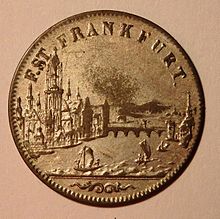
City view of Frankfurt a. M. on 6 cross coin from 1854
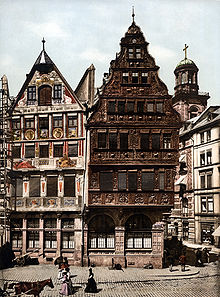
Salzhaus (right) and Haus Frauenstein (left) at Römerberg, photochrome print around 1896
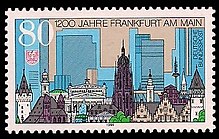
German special issue stamp "1200 years Frankfurt am Main" from 1994
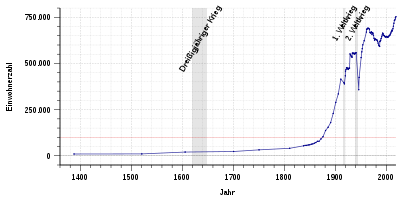
Population development of Frankfurt am Main from 1387 to 2018
Economy and location factors
In 2016, Frankfurt am Main, within its city limits, generated a gross domestic product (GDP) of 66.917 billion euros, ranking fourth among German cities by economic output and holding a 24.8 percent share of Hesse's total economic output. GDP per capita in the same year was 91,099 euros per capita (Hesse: 43,496 euros, Germany 38,180 euros). Frankfurt is thus the fifth richest independent city in Germany and the richest among the larger cities. The GDP per working person is 97,178 euros. There are approximately 688,600 employed persons in the city in 2016. The unemployment rate was 4.9 percent in December 2018, slightly above the average for Hesse of 4.1 percent. Frankfurt is the center of the Rhine-Main metropolitan region, which is one of the most economically powerful regions in the country and generates a GDP of more than 250 billion euros.
According to a 2001 ranking by the University of Liverpool, Frankfurt can be considered the most productive city in Europe (by gross domestic product per capita) (ahead of Karlsruhe, Paris and Munich). Today, the city is one of the richest and most efficient metropolises in Europe. This is also reflected in the high number of international business representations. In an annual study (European Cities Monitor, 2010) by Cushman & Wakefield, Frankfurt has held third place as the best location for international corporations in Europe (after London and Paris) for over 20 years. For the state of Hesse, Frankfurt is of central importance; 40 percent of the 4.24 billion euros in trade tax revenue in Hesse comes from Frankfurt.
In a ranking of the world's most important financial centers, Frankfurt ranked tenth in 2018.
Work in Frankfurt
Frankfurt is the city with the highest job density and the most commuters in Germany, with 699,600 people in employment (2017), including around 622,000 employees subject to social insurance contributions (2017). The number of daily commuters was 362,450 in 2017, while the number of outbound commuters was 95,074. The number of people in employment has been growing for years, increasing by more than 55,000 since 2010. Between 2000 and 2005, the number of employees subject to social insurance contributions fell from 495,000 to 463,000; since then, it has risen steadily.
More than 81,000 people work for around 500 companies at Frankfurt Airport, making it the largest local workplace in Germany. The largest single economic sector is the provision of financial and insurance services, which employs around 75,600 people. The strongest absolute growth can be seen in the sectors of transport and warehousing and professional, scientific and technical services.
The median gross pay of full-time employees subject to social security contributions in Frankfurt was €4,182 in 2017, around €1,200 higher than in 2000. There are significant differences between the individual sectors: while the median gross pay in the hospitality industry and simple services is €2,340, a full-time employee in the IT sector earns €5,350 and in the financial sector €6,080 per month. The high average income of full-time employees contrasts with 46,367 exclusively marginally employed and around 22,108 unemployed. The unemployment rate is 5.6 %. In 2005, the number of unemployed was still 35,637 (10.6 percent).
The city's high economic power is reflected in the coffers of surrounding cities and communities in the Speckgürtel, mainly in the Vordertaunus, which benefit from above-average tax payments by their commuters earning in Frankfurt, which is why two of Germany's five richest districts are located here, namely the Hochtaunuskreis with Bad Homburg vor der Höhe as the district capital and the Main-Taunus-Kreis with Hofheim am Taunus as the district capital.
Quality of life
A citizen survey conducted by the City of Frankfurt in December 2010 revealed that 66 percent of all Frankfurt citizens were "generally satisfied" or "very satisfied" with the city, while only six percent said they were "dissatisfied" with the city. Since 1993, the proportion of satisfied residents has risen by 22 percent, while the proportion of dissatisfied residents has fallen by eight percent. 84 percent of Frankfurt residents "like" living in their city, while 13 percent would "rather live somewhere else." Satisfaction with public safety in Frankfurt was 37 percent (1993: only nine percent), while 22 percent were dissatisfied (1993: 64 percent).
Crime
→ Main article: Frankfurt am Main Police Headquarters
Among all German cities with more than 200,000 inhabitants, the highest number of crimes per inhabitant was recorded in Frankfurt over many years. In 2013, this frequency figure was 16,292 offenses per 100,000 inhabitants. Because the city regularly ranked at the top of the crime statistics, it was sometimes referred to in the media as the "Capital of Crime" and "Germany's Most Dangerous Place." According to the police crime statistics published on April 24, 2017, Frankfurt ranked fourth for the first time in 2016, with 15,671 offenses per 100,000 inhabitants, behind Berlin, Leipzig and Hanover.
The Frankfurt police headquarters warned against using the frequency figure of all crimes for a comparison with other major cities, as the statistics only include the crimes known to the police and processed by them. The police pointed out that due to the highest commuter balance in Germany, around 260,000 additional people spend time in the city every day. In addition, there are visitors and tourists, around 1.5 to 2.5 million trade fair visitors and around 53 million airline passengers a year who also stay in the city area. Around six percent of all criminal offenses are registered at the airport, including cargo theft, passport offenses, and violations of immigration regulations and air traffic laws. The high number of offenses detected in Frankfurt is a result of the high control density in the city area, he said.
In their own publications on crime statistics, the municipal authorities and bodies also sought a different interpretation. In a differentiated analysis according to offense groups, Frankfurt was thus only at the top of the statistics for narcotics offenses and for residence offenses, and in the top group for fraud, simple theft and transport fraud. Credit card and account fraud is registered at the banks' headquarters, regardless of the actual location of the crime. The high number of narcotics offenses and fare evasion cases detected (around 6.7 percent of all cases registered in Germany) was a result of intensive controls at the airport and at traffic hubs in the city center. In terms of security-related crimes (violent offenses such as murder and manslaughter, rape and sexual assault, robbery and assault), Frankfurt ranked in the middle of the statistics.
A study conducted by the University of Greifswald in April 2011 on "Subjective Perceptions of Safety among the Population of Frankfurt am Main" found that 84 percent of citizens surveyed felt "safe" or "very safe" from crime during the day; at night, the figure was 71 percent.
Resident companies
Hardly any other German city is home to so many internationally leading companies from a wide range of industries, including chemical groups, advertising agencies, software companies and call centers. The headquarters of the Board of Management's Passenger Transport division with DB Regio AG as well as DB Fernverkehr AG, Group Development and other important departments of Deutsche Bahn AG and the subsidiary DB Netz AG are located in the DB headquarters in the Gallus district. For several decades after the Second World War, the fur trading center around Niddastrasse was the main trading center for furs and fur clothing in Germany and was one of the three most important markets in the industry worldwide. With a turnover of 536 million, the 356 German smoke trade and fur confection businesses located here contributed nearly 10 percent of the city's national product. At the time, 65 percent of all fur goods freely traded worldwide took some form of route through Frankfurt am Main. For years, Frankfurt was considered the "pharmacy of the world" by Hoechst AG. Industriepark Höchst is one of the three largest chemical and pharmaceutical industry sites in Europe. Frankfurt is also home to the German headquarters of major food companies such as Nestlé and Ferrero, as well as the headquarters of Germany's largest brewery group, the Radeberger Group. KPMG, one of the four largest auditing companies, has its European headquarters in Frankfurt. PricewaterhouseCoopers has its German headquarters in Frankfurt, Deloitte Touche Tohmatsu has a branch office and Ernst & Young has a branch office beyond the city limits in Eschborn. Some of the largest management consultancies and international law firms are also represented in Frankfurt.
Financial sector
→ Main article: Financial center Frankfurt am Main
Frankfurt am Main is the seat of the European Central Bank and the German Bundesbank. The city is a major financial center and stock exchange and, according to various rankings, is one of the world's most important financial centers. For example, the GaWC (Globalization and World Cities Research Network) classified Frankfurt as the only German city as an "alpha world city" due to its economic importance. This puts Frankfurt in the third category of world cities, along with 16 others.
Frankfurt is home to the four largest German banks, Deutsche Bank, Commerzbank, KfW and DZ Bank (as of 2015). Deutsche Bank and Commerzbank operate as universal banks and maintain branches worldwide. KfW's main task is to promote SMEs and start-ups, while DZ Bank is a central institution of the cooperative financial sector. As subsidiaries of DZ Bank, Union Investment, DVB Bank and Reisebank are also based in Frankfurt, and Frankfurter Volksbank, Germany's second-largest Volksbank, also has its headquarters here.
Among the public-sector credit institutions, Landesbank Hessen-Thüringen (Helaba), DekaBank, Landwirtschaftliche Rentenbank and Frankfurter Sparkasse are also headquartered in Frankfurt.
Germany's largest direct bank, ING-DiBa, is also based in Frankfurt. In addition, several major private banks have their headquarters or German headquarters in Frankfurt, such as SEB AG, Bankhaus Metzler, Hauck & Aufhäuser, Delbrück Bethmann Maffei, BHF-Bank and Corealcredit Bank. From the group of sustainability banks, Triodos Bank is represented with its German branch and GLS Gemeinschaftsbank with a branch in Frankfurt.
At the end of 2010, 154 foreign banks also had their German headquarters in Frankfurt, and a further 40 had an office there.
With the Frankfurt Stock Exchange and XETRA trading platforms operated by Deutsche Börse AG, Frankfurt is the second largest stock market in Europe and handles the lion's share of German securities trading. In addition, the German headquarters of the three major rating agencies Standard & Poor's, Moody's and Fitch Ratings are located in Frankfurt.
According to a study by Comdirect, the city ranked joint third with Hamburg among Germany's fintech locations in 2017, behind Berlin and Munich. At the end of 2017, there were 84 fintech startups in Frankfurt. Due to high rents and competition for qualified young talent, Frankfurt is considered a difficult place for fintechs, he said. Fintechs based in Frankfurt include the digital insurance provider Clark and the digital asset manager Moneyfarm.
Frankfurt's financial center also includes the supervisory bodies based here. From 1950 to 2000, the Federal Audit Office had its headquarters in Frankfurt. Today, the Federal Financial Supervisory Authority (BaFin), the Federal Agency for Financial Market Stabilization (FMSA) and two bodies of the European System of Financial Supervisors, the European Insurance and Occupational Pensions Authority (EIOPA) and the European Systemic Risk Board, which carries out early identification, prevention and combating of systemic risks within the financial market of the European Union, reside here. Since the end of 2014, there has also been a Single Supervisory Mechanism for the 150 largest banks in the euro zone.
Construction and real estate industry
According to the "Construction and Real Estate Industry" study by the Frankfurt am Main Chamber of Industry and Commerce, there were 14,589 companies in the construction and real estate industry in its district in 2012. In Frankfurt alone, there were 31,265 employees in this industry. In 1999, the industry still employed over 36,000 people. The largest companies include DTZ Zadelhoff, Jones LangLaSalle, BNP Paribas Real Estate, Bilfinger Berger, Hochtief, Porr Deutschland, Techem, Nassauische Heimstätte, ABG Frankfurt Holding, Wayss & Freytag, Wisag, Ed. Züblin and Albert Speer & Partner. Sales in the construction and real estate industry amounted to over 8 billion euros in 2011. Since 2002, it has increased by 7.8 percent.
Retail
The 600-meter-long Zeil in the city center is the best-known and highest-turnover shopping street in Frankfurt. With up to 13,120 passers-by per hour, it was the busiest of 170 German shopping streets for the first time in 2012. The Zeil took second place in a nationwide comparison of rents for retail space in 2009. A store owner paid up to 265 euros per square meter here. In February 2009, the new MyZeil shopping center opened in the Palaisquartier.
While the stores located on the Zeil are in the low to medium price category, nearby Goethestraße is known for its luxury brands. Compared with other so-called luxury miles such as Düsseldorf's Königsallee, it ranked a distant fifth in 2012 with 1,520 passers-by per hour. Other important retail locations in Frankfurt include the Nordwestzentrum in Nordweststadt, one of Germany's largest shopping centers, the Hessen-Center in the Bergen-Enkheim district, and the Main-Taunus-Zentrum in Sulzbach (Taunus), which is located on the city border.
There are also various shopping streets in the city's districts, such as Berger Strasse in Nordend and Bornheim, Schweizer Strasse in Sachsenhausen, Leipziger Strasse in Bockenheim, Königsteiner Strasse in Höchst and Oeder Weg, which extends from the city center into Nordend.
Another retail location is Skyline Plaza, which opened in August 2013. A shopping and convention center built on the site of the former main freight station in the Europaviertel district, Skyline Plaza offers space for 180 stores.
Automobile manufacturer
Frankfurt is home to numerous German and European headquarters of foreign automotive groups such as Fiat Chrysler Automobiles (with Fiat, Alfa Romeo and Jeep), Honda and Kia. In addition to Opel in Rüsselsheim am Main, Jaguar also has its headquarters in Schwalbach am Taunus just outside the city. Škoda and Seat have their German headquarters in Weiterstadt, about 30 kilometers away. The Japanese manufacturer Mazda operates a design center in Oberursel (Taunus). Hyundai's European sales headquarters are in Offenbacham Main.
In addition, the supplier industry is also strongly represented. From the former Frankfurt companies TEVES and VDO, Continental AG maintains production, administration and development sites in Frankfurt, Eschborn, Schwalbach am Taunus, Karben, Babenhausen (Hesse) and Friedberg (Hesse). The automotive manufacturers and suppliers in the region have joined forces in the Automotive Cluster Rhein Main Neckar.
IT and telecommunications companies
Frankfurt is home to numerous companies in the IT and telecommunications industry. These include large group-linked companies such as T-Systems, Finanz Informatik, DB Systel, Fujitsu and Lufthansa Systems. The telecommunications service providers Colt and Level 3 as well as the telecommunications equipment supplier Avaya have their German headquarters here. Central registration for Germany-related domain names is handled by DENIC, which is based in Frankfurt. The International Network Management Center (INMC) at the Europaturm coordinates and secures the operation of Deutsche Telekom's global voice and data network. The companies Deck13, Keen Games and Crytek are renowned developers of computer games, and Konami Europe is also based here. Nintendo of Europe, the European headquarters of the world's largest video game developer, Nintendo, is also located in Frankfurt with the majority of its departments; in April 2015, the headquarters were relocated here from Großostheim in Lower Franconia, which is not far away. The Games Academy, which specializes in training game developers, has had a branch in Frankfurt since 2007.
A particularly high concentration of IT companies can be found in former industrial areas along Hanauer Landstrasse, Mainzer Landstrasse and Gutleutstrasse. In the greater Frankfurt area, IT companies can be found primarily in Bad Homburg vor der Höhe, Eschborn, Kronberg im Taunus, Langen (Hesse), Neu-Isenburg and Schwalbach am Taunus. Frankfurt is part of the Rhine-Main-Neckar IT cluster.
Frankfurt is home to the so-called DE-CIX, the world's largest Internet hub in terms of data traffic. That is why a large number of data centers are also located in the city.
Associations
Associations such as the German Chemical Industry Association (VCI), the German Electrical and Electronic Manufacturers' Association (ZVEI), the Association of the Photographic Industry, the German Engineering Federation (VDMA), the Association for Electrical, Electronic & Information Technologies (VDE) with its associated Electrotechnical Standards Commission (DKE in DIN and VDE), the German Chefs' Association, the German Design Council, the Federal Association of the German Mail Order Industry and the German Institute for Internal Auditing (DIIR) also settled in Frankfurt. The German Association of the Automotive Industry (VDA) was headquartered in Frankfurt from 1946 to 2010 and hosted the International Motor Show (IAA) here every two years until 2019. In addition, the Börsenverein des Deutschen Buchhandels (German Publishers and Booksellers Association), which organizes the Frankfurt Book Fair, has its headquarters in Frankfurt. DECHEMA Gesellschaft für Chemische Technik und Biotechnologie e. V. a non-profit scientific and technical society, awards numerous scientific prizes and organizes Achema, the world's largest trade fair for chemical engineering, environmental protection and biotechnology, every three years together with Messe Frankfurt.
Unions
The headquarters of the trade unions IG Metall, IG Bauen-Agrar-Umwelt and the Gewerkschaft Erziehung und Wissenschaft (GEW), which belong to the German Trade Union Confederation (DGB), are located in Frankfurt. There is also the headquarters of the German Locomotive Drivers' Union (Gewerkschaft Deutscher Lokomotivführer) in Frankfurt.
Fair
→ Main article: Messe Frankfurt
Trade fairs have been held in Frankfurt am Main since the Middle Ages. In 1240, Emperor Frederick II granted the city the privilege of a trade fair, under the protection of which the annual autumn fair developed into a hub for long-distance European trade. In 1330, the spring fair was added. Frankfurt was connected to Leipzig, the second major trade fair location in the Holy Roman Empire of the German Nation, by a long-distance road, the Via Regia. After a period of decline since the 18th century, the city was able to resume its old trade fair tradition after the Second World War.
Messe Frankfurt is the venue for the Frankfurt Book Fair, Achema and Ambiente, among others. The most traditional trade fair, called Tendence for some years, has lost much of its importance in recent years. From 1951 to 2019, the International Motor Show was held here.
Recent economic development
Every year, a study group of economists examines the world's most important business centers on behalf of Mastercard. Frankfurt am Main came in seventh place in 2007, far ahead of all other German locations, as these are more national than global in orientation. The importance of globalization for the city's economic development is also reflected in the extensive structural change that Frankfurt's economy has undergone in recent decades.
From 1988, five, and between 1990 and 1996 as many as six, of the 30 DAX companies were based in Frankfurt, including three banks (Commerzbank AG, Deutsche Bank AG, Dresdner Bank AG) and three industrial groups (Degussa AG, Hoechst AG and Metallgesellschaft). By mid-2007, Frankfurt was home to only three DAX-listed corporations, two banks (Commerzbank and Deutsche Bank) and one service company (Deutsche Börse). In the 1980s, structural change initially affected the metal and electrical industries, which had traditionally been very strong in Frankfurt. Companies such as Hartmann & Braun, Vereinigte Deutsche Metallwerke, Demag, Naxos-Union, Adlerwerke, Tenovis and VDO closed their Frankfurt plants or relocated their headquarters, mostly following mergers or takeovers. AEG, formerly Germany's second-largest electronics group, was taken over by Daimler-Benz in 1982 after a settlement and liquidated in 1996 after years of economic decline. Degussa moved its headquarters to Düsseldorf in 2001 and is now part of the Essen-based Evonik Group. Metallgesellschaft changed its name to GEA Group in 2005 and moved to Bochum.
Although Frankfurt is one of the largest locations for the chemical and pharmaceutical industry in Europe, none of the major corporations is headquartered in Frankfurt anymore. In the 1970s and 1980s, Hoechst AG was at times the world's largest chemical and pharmaceutical company by sales. In 1997, it split into several companies that today belong to international groups such as Bayer, Celanese, Clariant and Sanofi. More than EUR 350 million is invested annually in Industriepark Höchst, one of Europe's three largest chemical sites, which employs some 22,000 people. Ticona's new production facility in Höchst opened on September 26, 2011. Its relocation had become necessary because the former plant was in the way of the expansion of Frankfurt Airport. Fraport had acquired the former Ticona plant site in Kelsterbach for a sum of 650 million euros.
Cassella AG in Fechenheim, once one of the largest manufacturers of dyes and a subsidiary of Hoechst, fell to Clariant in 1997 when Hoechst was split up. The former Cassella plant on the Mainkur continues to exist as the headquarters of Allessa GmbH. The company's name contains an ananym of Cassella. Another large medium-sized pharmaceutical company in Frankfurt is Merz Pharma.
Deutsche Bahn moved its corporate headquarters to Berlin for political reasons as a result of reunification in 2000. Group Development and other central departments as well as the subsidiaries DB Netz and DB Systel remain based in Frankfurt.
Until the 1990s, Frankfurt's high trade tax, high office rents and high land prices led companies to relocate to the Speckgürtel, just outside the city. For example, Deutsche Bank built its new data center in Eschborn in the 1990s, and BHF-Bank built its data center in Offenbach in 1997. In the meantime, however, it can be observed that companies give greater weight to the image advantage than the lower business tax rates; Mattel moved its German headquarters back to the city.
According to the latest business survey by the Frankfurt am Main Chamber of Industry and Commerce, the economy in the CCI district continues to expect a positive development. The business climate index stood at 129 points in fall 2017. In the 2016 Future Atlas, the district-free city of Frankfurt am Main ranked tenth out of 402 districts and district-free cities in Germany, making it one of the regions with "top future opportunities" with particular strength in innovation and the labor market.
Purchasing power
Despite the structural change, Frankfurt maintained its position among major German cities in terms of gross domestic product per capita and employed persons in the years 2002 to 2007, as well as in terms of quality of life and attractiveness for new residents (as shown above). The decline of classic industries was compensated on the one hand by growth in the service sector, including companies such as Fraport and Deutsche Börse, and on the other hand by new settlements of the German or European headquarters of major foreign companies, for example in the automotive and IT industries. The city tries to avoid a one-sided focus on the financial sector and supports, for example, the expansion of Frankfurt as a research location for biotechnology. Frankfurt has therefore retained its strong position in criteria such as population growth, unemployment rate or gross domestic product per inhabitant and employed person. Disposable incomes are among the highest in Germany. Private purchasing power is even higher in the neighboring Hochtaunus district (index in 2020: 142.6) and in the Main-Taunus district (129.9). Nevertheless, Frankfurt has an above-average purchasing power index of the national average at 113.5 in 2020.
Tourism
Tourism is of significant and growing importance for Frankfurt. In 2015, Frankfurt counted more than 5.1 million visitors and almost 8.7 million overnight stays in 265 accommodation establishments. Almost 57 percent of overnight visitors came from Germany. This put the city in fourth place behind Berlin, Munich and Hamburg among the most popular city destinations in terms of overnight stays, in third place among foreign overnight visitors, and in first place in terms of travel from Asian countries. Since 1990, the number of beds in the accommodation sector has increased from 19,373 to 45,333, with the most overnight stays in September and October and the fewest in December and January. The average length of stay is 1.7 nights. Around 70 percent of overnight stays are business-related; for example, more than 1.7 million overnight stays were incurred in 2015 in connection with the 73,163 congresses and conferences held in Frankfurt.
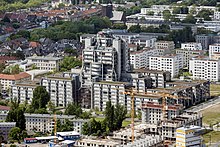
Former Deutsche Bahn headquarters
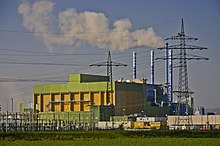
Industrial Park Höchst
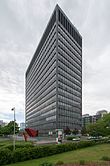
Headquarters of Colt and Nintendo in the Lyon Quarter
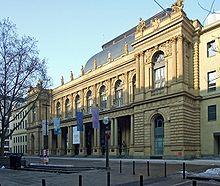
Frankfurt Stock Exchange
Government institutions and organizations
The Deutsche Bundesbank has been headquartered in Frankfurt since 1957, as was the case with the Bank deutscher Länder, which existed from 1948 to 1957. Since 1998, the European Central Bank, responsible for the monetary policy of the nineteen EU countries in the Eurozone, has been based here. Since 2004, Frankfurt has been the seat of the European insurance supervisory authority (from 2004 to 2011) CEIOPS, since then EIOPA, and since the end of 2014 also of the central European banking supervisory authority. In addition, KfW and the German International Finance Corporation office (as part of the World Bank Group) are based here. Federal authorities based in Frankfurt include the Federal Financial Supervisory Authority, the Federal Agency for Financial Market Stabilization and the Federal Agency for Cartography and Geodesy. The Federal Office of Economics and Export Control is located in the suburb of Eschborn. A number of authorities, including the Federal Audit Office, moved to Bonn as a result of the Berlin/Bonn Act.
The German Library was founded in Frankfurt in 1946, today a location of the German National Library. The judiciary is represented by the Frankfurt am Main Higher Regional Court, which has jurisdiction over Hesse, the Hessian Regional Labor Court, the Frankfurt am Main Regional Court, the Frankfurt am Main Social Court, the Frankfurt am Main Labor Court, the Frankfurt am Main Administrative Court and the Frankfurt am Main Local Court. Until its dissolution at the end of 2003, Frankfurt was also the seat of the Federal Disciplinary Court.
The Frankfurt am Main Police Headquarters is one of the seven police headquarters in Hesse. Municipal security and order tasks are assigned to the Frankfurt am Main municipal police (auxiliary police in the sense of § 99 HSOG). Frankfurt is the seat of the Hessian Chief Finance Office (Oberfinanzdirektion Hessen). Frankfurt is also home to the Hessian Office for Supply and Social Affairs. The Frankfurt Fire Department, founded in 1874, operates 12 guards of the professional fire department and 28 guards of the volunteer fire departments.
Frankfurt is also home to 108 consulates. Only New York has more foreign representations without being the capital of a state. The American Consulate General in the North End, with more than a thousand employees, is the largest diplomatic representation in Frankfurt and the world's largest consulate of the United States of America.
Education and research
Universities
Frankfurt am Main is home to two universities, two art colleges and several universities of applied sciences. The city's best-known and oldest university is the Johann Wolfgang Goethe University, founded in 1914, with its four main campuses in Bockenheim, Westend, Riedberg and the Niederrad University Hospital.
Founded in 1971 from various predecessor institutions, the Frankfurt University of Applied Sciences - Frankfurt University of Applied Sciences since 2014 - offers more than 50 degree programs with a focus on applied engineering and economics as well as social and health sciences. All departments are located on the Nibelungenplatz/Kleiststraße campus in the Nordend district.
The Philosophical-Theological University Sankt Georgen is the oldest private scientific university in Frankfurt. It is supported by the German Province of the Jesuits and has been located in the district of Sachsenhausen since 1926. There are also several private universities in Frankfurt. The Frankfurt School of Finance & Management emerged from the Bankakademie and the Hochschule für Bankwirtschaft and is located with its campus in Frankfurt's Nordend district. Since 2001, the FOM Hochschule für Oekonomie & Management (FOM) has operated a study center in the West End. The Provadis School of International Management and Technology, founded in 2003, is located in Industriepark Höchst. Since 2007, the International School of Management has had a study site in Sachsenhausen.
In the artistic field, Frankfurt has, on the one hand, the Staatliche Hochschule für Bildende Künste - Städelschule, founded in 1817 by Johann Friedrich Städel, which later became the property of the city and was elevated to the status of a state art college for the liberal arts in 1942. The other well-known art academy is the Hochschule für Musik und Darstellende Kunst (Academy of Music and Performing Arts), which emerged from the private foundation Dr. Hoch's Konservatorium - Musikakademie established in 1878.
General education schools
Frankfurt's school system is based on the city's school development plan, the current update of which for 2018-2024 was approved by the city council in May 2020. In 2018/19, there were 149 public general education schools attended by just under 70,000 students. Due to strong population growth, an increase of about 6 percent to 74,000 students is expected by 2024, especially in the grammar schools and integrated comprehensive schools.
The Lessing Gymnasium, which teaches ancient languages, and the Goethe Gymnasium both go back to the municipal Latin school founded in 1520 for the education of the burghers' sons. The Heinrich von Gagern Gymnasium, which is also an old-language school, was founded in 1888 under the name Kaiser-Friedrichs-Gymnasium to relieve the burden on the municipal Lessing Gymnasium. Other municipal grammar schools such as the Musterschule, founded in 1803, and the Wöhlerschule were also established on the initiatives of Frankfurt citizens. Höchst's oldest high school is the Leibnizschule, which dates back to a secondary school founded in 1817. Gymnasium Riedberg, which opened in 2009, was the first new grammar school to be founded since 1914. An upper-level grammar school founded at Riedberg in 2013 moved to Bockenheim in 2017. It is to be based in the Gallus district in the medium term. The Adorno Gymnasium, founded in 2015 and initially housed provisionally in Höchst, moved to a new temporary facility on the Westend university campus in 2019. In the long term, it will maintain its location on Miquelallee/Eschersheimer Landstraße. Other new establishments in recent years included Gymnasium Nord in Westhausen and Gymnasium Römerhof in Bockenheim, which began operations in the 2018/19 school year. In total, the school development plan envisages the construction of eleven additional schools by 2024, including eight elementary school, a six-form entry high school in the south of Frankfurt, an integrated comprehensive school and a cooperative comprehensive school.
In addition to the 19 municipal high schools, there are twelve privately run high schools and one European School. From its founding in 1804 until its forced closure by the National Socialists in 1942, the Philanthropin was Germany's longest-running and, at times, largest Jewish school, with 1,000 students. Today, the building houses the I. E. Lichtigfeld School of the Frankfurt Jewish Community.
In terms of secondary schools, Frankfurt has 15 municipal integrated comprehensive schools, three cooperative comprehensive schools, 14 Realschulen and nine Hauptschulen. The Ernst Reuter School, founded in the early 1960s, is one of the first integrated comprehensive schools, and the Hessenkolleg Frankfurt is one of the oldest second-chance educational institutions in Hesse. The Otto Hahn School in Nieder-Eschbach, a cooperative comprehensive school founded in 1969, is one of the city's largest schools with more than 1,300 students.
Vocational schools
Among the 26 secondary vocational schools in Frankfurt, 16 are run by the city and 10 are privately run. These include the Mediacampus Frankfurt of the Börsenverein des deutschen Buchhandels and the Academy of Visual Arts.
Other educational and research institutions
Furthermore, the Max Planck Institutes for Legal History and Theory (mpilhlt), Biophysics and Brain Research exist in the city. The city of Frankfurt is also a "Corporate Sponsoring Member" of the Max Planck Society. Closely associated with the university is the Frankfurt Institute for Advanced Studies, an interdisciplinary institution sponsored by numerous institutional and private sponsors for basic theoretical research in physics, chemistry, biology, neurology and computer science.
The Leibniz Institute for Educational Research and Educational Information (DIPF), located in Bockenheim, is a research and service institution in the field of educational research. The DIPF's tasks include the design, development and evaluation of all questionnaires to be used in PISA 2015. The DIPF is also responsible for the biennial National Education Report "Education in Germany".
The Frankfurt Adult Education Center is organized as a municipal enterprise of the City of Frankfurt and has its headquarters in Frankfurt's Ostend district.
The Catholic Adult Education - Landesarbeitsgemeinschaft Hessen, the Diözesanbildungswerk Limburg, and the Bildungswerke Frankfurt, Main-Taunus and Hochtaunus have their headquarters in the Haus am Dom.
The Evangelische Akademie Frankfurt, formed in 2012 from a merger of the Evangelische Stadtakademie Römer9 and the Evangelische Akademie Arnoldshain, is located opposite the Historisches Museum on Römerberg.

enlarge and show information about the image
![]()
I.G.-Farben-Haus on the Westend Campus of Goethe University

Max Planck Institute for Biophysics on the Riedberg Campus of the Johann Wolfgang Goethe University
Awards given by the city
- Honorary citizenship (highest municipal honor, see list of honorary citizens of Frankfurt am Main)
- Entry in the Golden Book of the City of Frankfurt am Main
- Badge of Honor of the City of Frankfurt am Main (since 1952, awarded annually to up to five persons)
- Citizen's Medal of the City of Frankfurt am Main (awarded annually to up to five persons since 2002)
- Frankfurt Founders' Prize (since 2001)
- Goethe Plaque of the City of Frankfurt am Main (awarded annually since 1947 to personalities from cultural life)
- Goethe Prize of the City of Frankfurt am Main (since 1927, initially annually, now every three years on Goethe's birthday, 50,000 euros)
- Ignatz Bubis Prize (every three years since 2001)
- Integration Award of the City of Frankfurt am Main (awarded annually to individuals or institutions, 15,000 euros)
- International Highrise Award (annual, financed by Deka-Bank, 50,000 euros)
- Max Beckmann Prize (every three years on the occasion of his birthday, to promote and recognize outstanding achievements in the fields of painting, graphic arts, sculpture and architecture - 50,000 euros)
- Otto Hahn Prize (every two years, for outstanding achievements in chemistry, physics or applied engineering, 50,000 euros)
- Römerplakette of the City of Frankfurt am Main (for persons working in an honorary capacity, three levels: 10, 15 and 20 years)
- Sports plaque (for title winners and volunteers from this field)
- Theodor W. Adorno Prize (since 1977, every three years, for outstanding achievements in the fields of philosophy, music, theater and film - 50,000 euros)
- Tony Sender Award (every two years, for the promotion of equality, 10,000 euros)
- Walter Möller plaque (every two years, groups, citizens' initiatives, etc., 10,000 euros)
- Walter Kolb Memorial Prize (annually for outstanding dissertation, 2500 euros)
- Johann-Philipp-von-Bethmann-Studienpreis (annual award for outstanding projects researching Frankfurt's urban history)
.jpg)
Honorary citizen Otto Hahn (1959)
Personalities
In the list of personalities of the city of Frankfurt am Main are listed well-known sons and daughters and other people connected with the city. Persons appointed honorary citizens by the city can be found in the list of honorary citizens of Frankfurt am Main.
Name sponsorships
A task force supply ship of the German Navy bears the name Frankfurt am Main. Previously, the small cruiser SMS Frankfurt of the Imperial Navy during World War I and the wooden steam corvette Frankfurt of the fleet of the German Confederation were named after the city. In the merchant fleet there was, among others, the fast steamer Frankfurt of Norddeutscher Lloyd from 1900 to 1918 and from 1954 the combined freighter "Frankfurt" of Hapag, as well as from 1981 to 2007 the Frankfurt Express of Hapag-Lloyd, which was the largest container ship in the world from 1981 to 1984. In 2010, another containership named Frankfurt Express was put into service.
In 1960, the city of Frankfurt took on one of the first naming sponsorships for a Deutsche Lufthansa aircraft. From 1960 to 1975, the Boeing 707 D-ABOD bore its name, from 1975 to 1985 a DC-10 and from 1985 to 1990 a B747-200. In 1991, Lufthansa christened the B747-430 with the registration D-ABVF with the name of the city, which it bore until May 2010. On May 19, 2010, Lufthansa's first Airbus A380 D-AIMA was given the name Frankfurt am Main.
An asteroid discovered in 2007 in the asteroid belt is named (204852) Frankfurt.
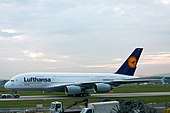
Lufthansa Airbus A380 Frankfurt am Main
_on_2009-04-26.jpg)
EGV Frankfurt am Main of the German Navy
Awards
In 1969, the city of Frankfurt am Main was awarded the Winckelmann Medal of the German Archaeological Institute (DAI).
In 2015, the city of Frankfurt am Main ranked first worldwide in the "Sustainable Cities Index" compiled by the international planning and consulting company Arcadis and the Centre for Economic Policy Research (CEPR) in London.
Worth knowing
On the last series of D-Mark banknotes, on the 200 D-Mark banknote, to the left of the portrait of the physician Paul Ehrlich, there was a collage of various historical buildings of Frankfurt. There you can see the Paulskirche, the Kaiserdom, the Saalhof with Rententurm, the Hauptbahnhof, the Eschenheimer Turm, Paul Ehrlich's home in Westendstraße, the Hauptwache, the Römer and Römerberg Ostzeile, the Goethe-Haus and the Eiserne Steg.
The female personification of Frankfurt is the Francofurtia, which is often found as an allegorical representation on facades and monuments or on historical coins and documents. Objects suitable for collecting that refer to Frankfurt are called Francofurtensia.
The Futura font is not only used in the city's corporate identity and employed by municipal offices, but is also used as the "Frankfurt font" by numerous local associations and organizations, including the Ernst May Society, for example.

200 D-Mark banknote with historic buildings of Frankfurt
See also
![]()
Portal: Frankfurt Rhine-Main - Overview of Wikipedia content on the topic Frankfurt Rhine-Main
Film
- Art student Ursula, advertising film for the city of Frankfurt am Main, Germany, 1956/57, 19:41 min., publisher: Boehner-Film Fritz Boehner KG (Hamburg + Erlangen), commissioned by: City of Frankfurt am Main, supported by the Department of Transport and Science, Art student Ursula in the German Digital Library
- So war das alte Hessen - Frankfurt. Documentary, Germany, 2013, 43:40 min., Written and directed by: Jörg Adrian Huber, Production: Hessischer Rundfunk, Series: So war das alte Hessen, First broadcast: April 9, 2013 on HR3, Synopsis by ARD.
- FRANKFURTinsights - The 1000 Wonders of Frankfurt, documentary series, Germany, 2014-2015, 8 times 5 min, concept and direction: Thomas Pohl, production: Department Studios Filmproduktion, commissioned by: Press & Information Office of the City of Frankfurt am Main, first broadcast: April 1, 2014, including Lord Mayor Peter Feldmann, Frankfurt Fire Department, Liebieghaus, demolition of the Uniturm, rescue helicopter Christoph 2, link to films
Questions and Answers
Q: What is the population of Frankfurt?
A: The city of Frankfurt has a population of 700,000. The metropolitan area, called Rhine-Main after its two biggest rivers, has over four million people.
Q: What is the name of Frankfurt's international airport?
A: The Frankfurt International Airport is the largest in Germany, and one of the largest in the world.
Q: What does "Frankfurt am Main" mean?
A: "Frankfurt am Main" translates to "Frankford on the Main", referring to a ford in a river where it was shallow enough to walk through and where Frankish kings built a palace and church centuries ago.
Q: Why is Frankfurt an important centre for traffic and finance?
A: Frankfurt is an important centre for traffic and finance because it has one of the largest train stations in Europe as well as being home to the European Central Bank, German Federal Bank (Bundesbank) and some of Germany's biggest banks with an important stock exchange where shares of German companies are traded.
Q: How did Frankfurt become so international?
A: Every third inhabitant in Frankfurt is not German; most immigrants come from southeastern Europe, Turkey and North Africa but there are people from almost every country living here. Additionally, many international business companies have set up shop in this city due to its large airport which links it with many countries around the world.
Q: What type of climate does Frankfurt have?
A: Frankfurt has an oceanic climate (Cfb in the Köppen climate classification).
Search within the encyclopedia
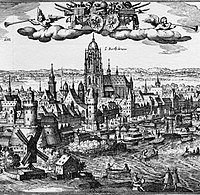
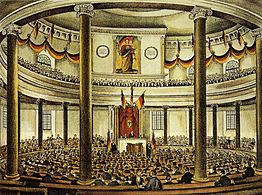
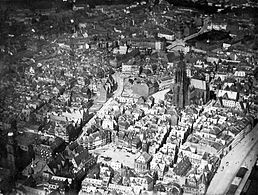
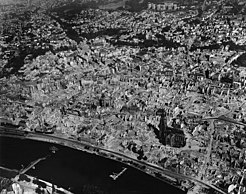
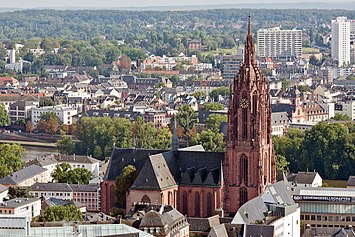
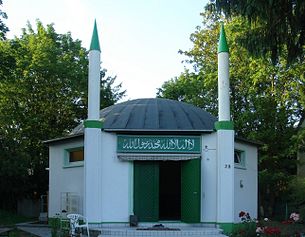
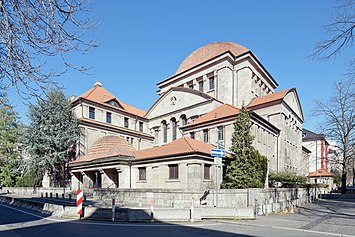
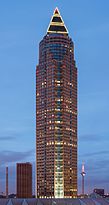
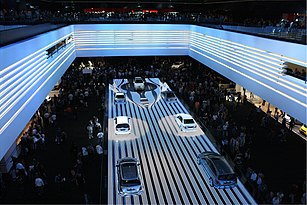
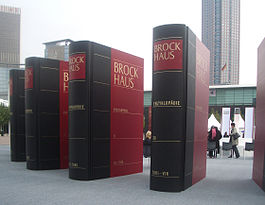
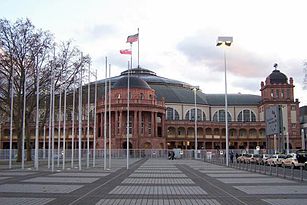
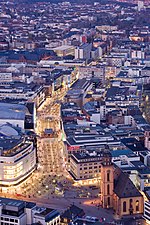
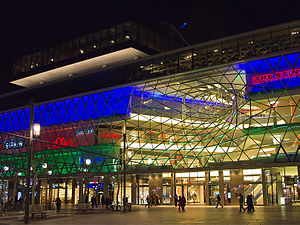
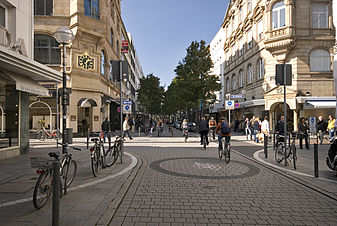
.jpg)
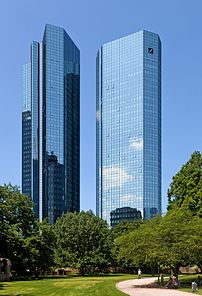
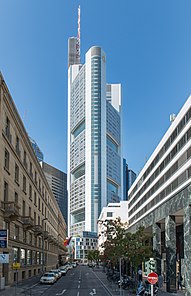
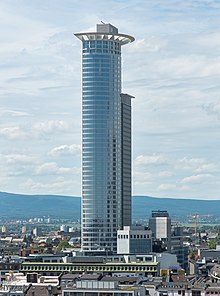
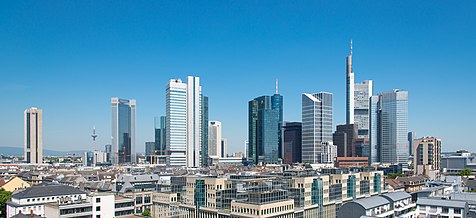
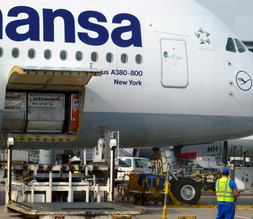
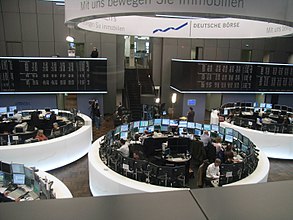
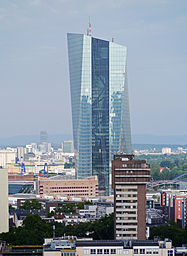
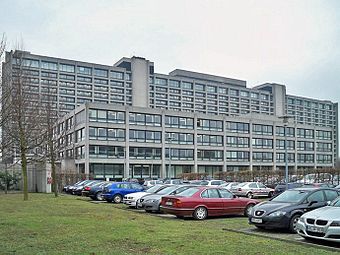
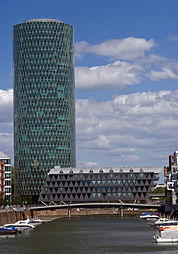
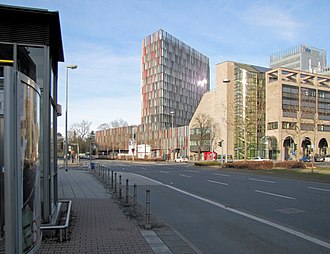
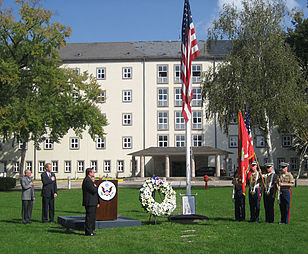
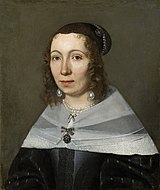
.jpg)
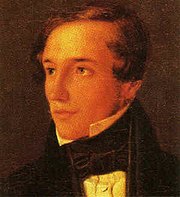
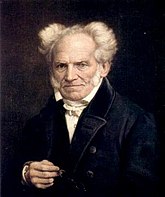
.jpg)